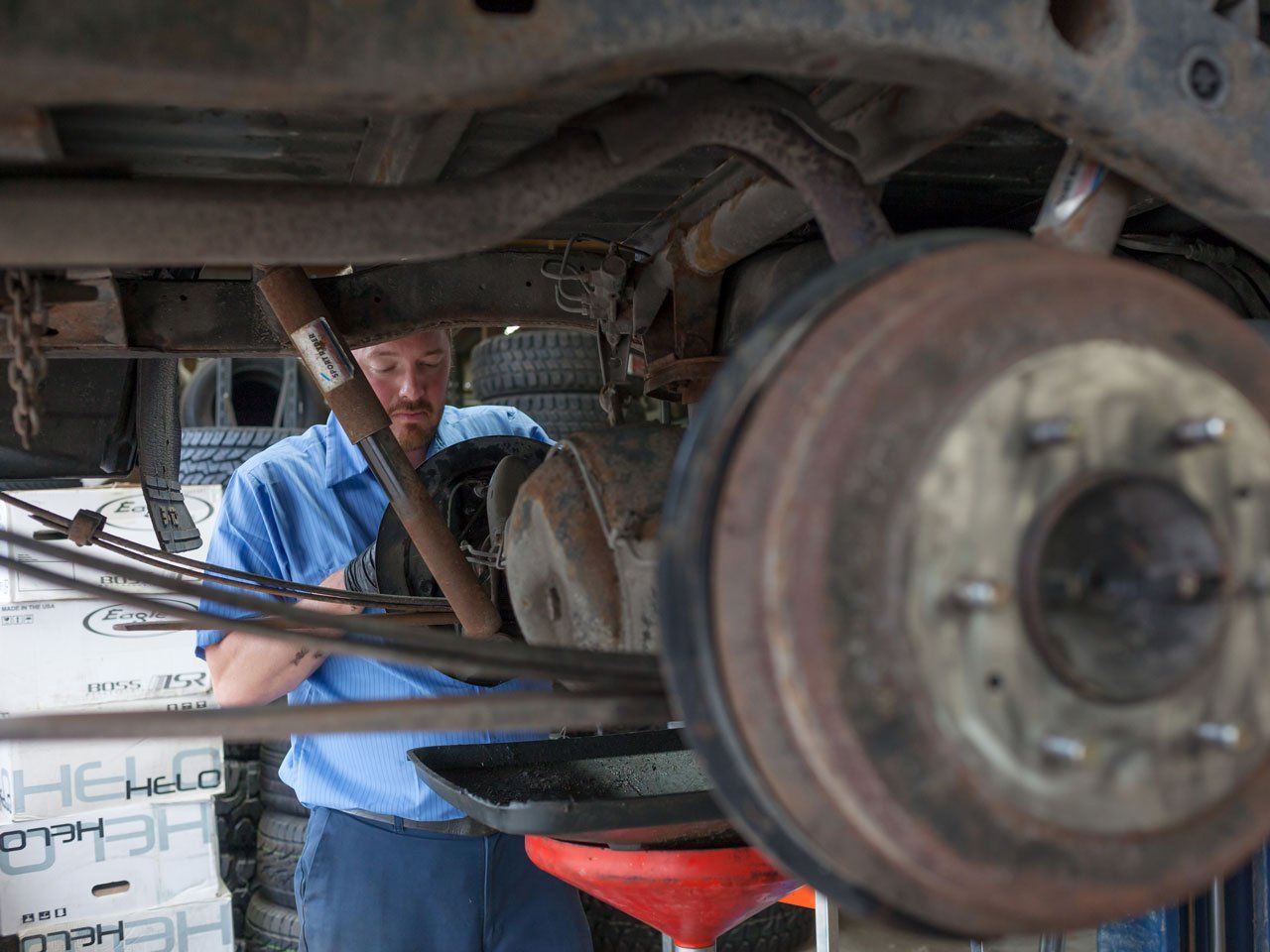Brake Service
Mid-Missouri’s Leader in Brake Service and Repair
Brake service is one of many automobile services we provide. Our ASE-certified technicians take professionalism to the next level by offering courteous and knowledgeable service to all of our customers. Continually striving to master every aspect of automotive care, ASE technicians follow Motorist Assurance Program Uniform Inspection Guidelines for your vehicle’s braking system to assure safe, smooth driving.
When your mechanic is wearing the ASE patch, don’t expect to get to know him—you won’t be back in for a long time! That’s because our ASE technicians do the job right the first time.
When your mechanic is wearing the ASE patch, don’t expect to get to know him—you won’t be back in for a long time! That’s because our ASE technicians do the job right the first time.
Your Brake System Replacement and Repair Specialists
Your vehicle’s brake system is a culmination of over 100 years of technological innovation, transforming crude stopping mechanisms into dependable and efficient equipment. While brake systems vary by make and model, the basic system consists of disc brakes in front and either disk or drum brakes in back. Connected by a series of tubes and hoses, your brakes link to each wheel and to the master cylinder, which supply them with vital brake fluid (hydraulic fluid). We can summarize all of your braking equipment into two categories, Hydraulics
and Friction Material.
Warning Signs that Your Car’s Brakes May Need Service:
- Squealing or grinding noises when using brakes. This could mean your brakes need to be adjusted or that your brake pads are worn and need a replacement service.
- Your dashboard’s Anti-lock Braking System (ABS) light turns on. This indicates that your brake fluid is low. You may have a leak in your brake line. Get it inspected.
- While braking, your car pulls to one side. This means that your brakes need adjustment, there is brake fluid leakage, or your brakes are worn out and need brake replacement.
- Your brakes are hard to press down or feel “spongy.” Usually this means air has gotten into your brake lines or you may have low brake fluid.
- When applying your brakes, your steering wheel, brake pedal, or entire vehicle begins to shake.
If this happens, your brake rotors could be warped and need brake replacement.
A car without functioning brakes is dangerous. In many cases, warning signs will tell you if your car’s brakes may need a repair or replacement service. Make sure to be conscious of any possible warning signs while operating your vehicle, in order to ensure your safety and the safety of others on the road. You can learn more about the Federal Motor Carrier Safety Administration’s required brake systems regulations
here.
When you notice any of these warning signs, contact our professional staff by phone, or email, immediately for a repair cost estimate and we’ll take care of it.

